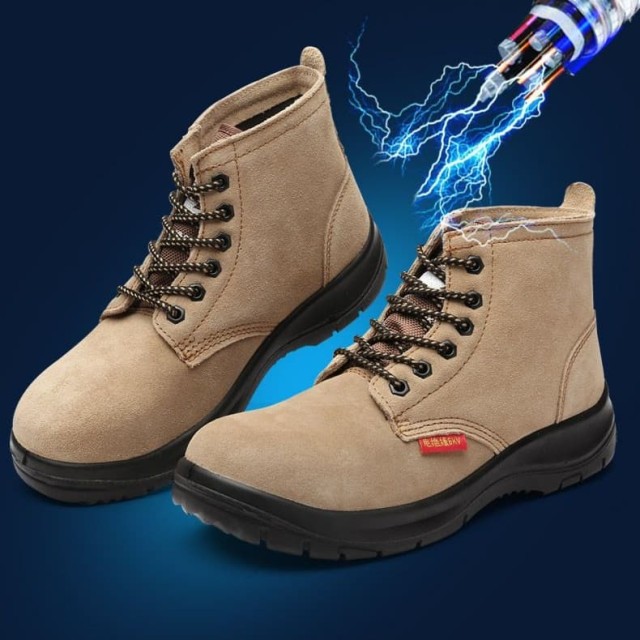When workplace hazards include electrical currents or explosive atmospheres, your footwear becomes a critical line of defense. Understanding the difference between Electrical Hazard (EH) and Static-Dissipative (SD) work boots could mean the difference between safety and catastrophe. This guide breaks down their unique protections, compliance standards, and how to match them to your job’s risks—so you can work confidently in hazardous environments.
How Electrical Hazard (EH) Boots Prevent Electrocution
EH-rated boots are engineered to reduce the risk of electric shock when accidental contact with live circuits occurs. Unlike standard work boots, EH designs incorporate non-conductive materials in their soles and heels to block electrical currents from traveling through the wearer’s body.
Key Protections:
- Voltage Resistance: EH boots are tested to withstand at least 14,000 volts under dry conditions (though they’re not rated for direct contact with high-voltage sources).
- Insulation Layers: Specialized rubber or composite soles create barriers against ground-level electrical hazards, common in construction or utility work.
- Use Cases: Ideal for electricians, linemen, or anyone working near exposed wiring or equipment.
Safety Note: EH boots are a secondary safeguard—they don’t replace lockout/tagout procedures or insulated tools.
When Static-Dissipative (SD) Boots Are Necessary
SD boots serve a different purpose: controlling static electricity buildup that could ignite flammable gases, vapors, or dust. By allowing a controlled discharge (typically 1–100 megohms of resistance), they prevent sparks in sensitive environments.
Industries Relying on SD Protection:
- Chemical Manufacturing: Where volatile substances require static control.
- Grain Handling: Dust clouds in silos can explode from a single spark.
- Aerospace or Electronics: Prevents static damage to sensitive components.
Did you know? SD boots often feature conductive fibers or carbon-infused soles to safely channel static away from the body.
ASTM Standards and Compliance for Electrical Safety Footwear
Both EH and SD boots must meet strict ASTM International standards:
- EH Compliance (ASTM F2412-18a): Tests for dielectric insulation properties.
- SD Compliance (ASTM F2413-18): Measures electrical resistance levels.
Pro Tip: Look for the ASTM label stitched or stamped inside the boot’s tongue. Non-compliant footwear may lack critical safety features.
How to Choose the Right Boots for Your Job
Decision Checklist:
-
Assess Your Hazard:
- EH: Choose for wet environments or accidental contact with live wires.
- SD: Essential for explosive atmospheres or static-sensitive workspaces.
-
Prioritize Fit and Comfort: Safety features mean little if boots cause fatigue. Opt for cushioned insoles and breathable linings.
-
Verify Certifications: Ensure ASTM markings align with your job’s requirements.
-
Consider Additional Protections: Some boots combine EH/SD with steel toes or puncture resistance.
Final Thought: The right boots aren’t just PPE—they’re productivity tools that keep you safe without sacrificing mobility.
Ready to Equip Your Team with Reliable Safety Footwear?
3515 specializes in bulk orders of EH and SD work boots tailored to industrial demands. Whether you’re a distributor supplying hazardous-work industries or a brand owner needing custom safety solutions, our manufacturing expertise ensures compliant, durable footwear. Contact us today to discuss volume pricing and OEM options—because every step should be a safe one.
Related Products
- Wholesale Customizable Suede Safety Boots - Puncture-Proof with Velcro Closure
- Safety Footwear Wholesale Manufacturer for Custom OEM/ODM Production
- Wholesale Anti-Smash & Puncture-Proof Safety Shoes Custom Manufacturing for Brands
- Durable Goodyear Welt Leather Work Boots for Wholesale & Private Label
- Durable Leather Work Boots Wholesale Manufacturer & Custom Factory
Related Articles
- How to Choose Work Boots That Match Your Job's Safety Demands
- Steel Toe Work Boots: Balancing Safety and Comfort for Demanding Jobs
- Work Boots vs. Western Boots: How to Choose the Right Footwear for Labor Safety
- How to Choose Work Boot Materials for Maximum Safety and Durability
- How to Extend Work Boot Lifespan: Science-Backed Care for Safety & Savings



















